Scrub planes are kind of interesting. Their main purpose is to remove stock rapidly in order to flatten a twisted or cupped board as well as doing rapid removal (almost ripping) of the edge of a board. The common scrub plane whether made by Stanley, Record, Lie Nielsen, Veritas or ECE is sort of short and on the narrow side with a heavily cambered blade.
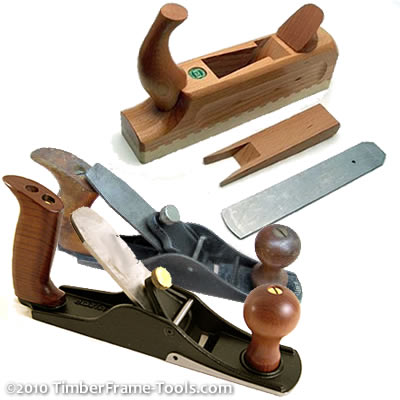
Styles vary, but scrub planes are usually short and narrow
The cambered iron allows a deep shaving, more like a chip, to be removed without much tear out. It creates a gouge in the wood severing the fibers at both edges of the blade as it works across or diagonal to the grain. I have seen several references to how much the Stanley 40 was cambered. However, I like using a Stanley Jack Plane (No.5) because I like the added length and mass of the plane. The No5 also gives me a depth adjuster that the Stanley 40 and its imitators lack.
The question I ran into was how much camber do I put on a 2" wide blade of a No5 plane?
I should point out that there is a science to the amount of camber. Too much camber and the iron only uses a small portion of its width and the rest of the width is wasted. To little camber and the blade will not take a deep enough bite out of the wood and will be too timid to be used as a scrub plane (scrubs are not supposed to be timid). See the diagram below for the examples.
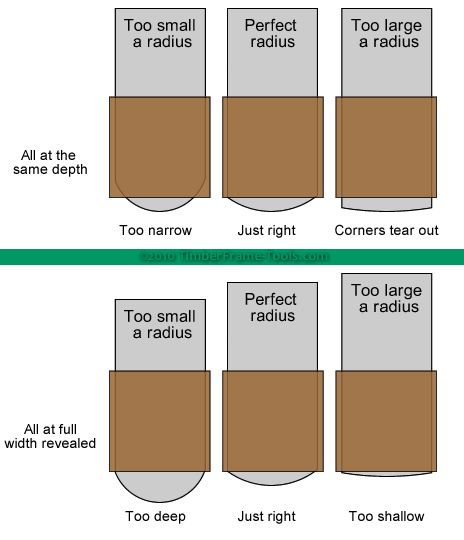
This comparison of scrub plane iron cambering shows the extremes, and the ideal middle.
There is in fact a happy medium. The question is how to attain it. You could just jump to the grinder and start doing it by eye, but that would never work for me ... apparently my eye is not that good. I need a map of how big to make the radius of the blade. Turns out, it can be calculated with a little geometry and algebra.
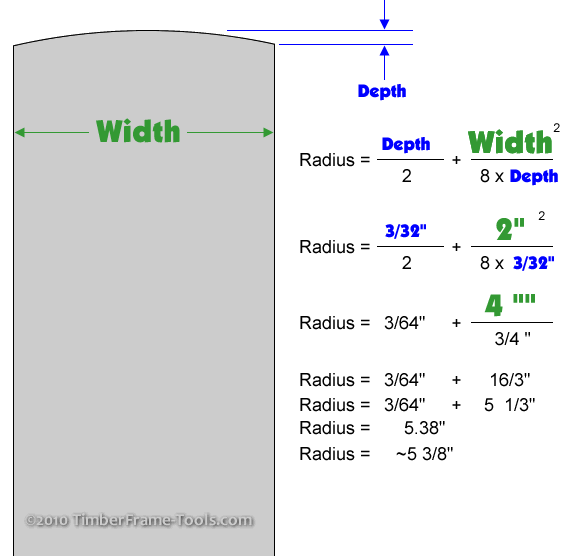
This equation lets you plug in the width of your iron, and the depth of the iron and out pops the perfect radius.
In the example equation above, I had a 2" wide blade and wanted a 3/32" reveal of the blade when being fully used. In reality I probably back it down to closer to 1/16" but that gives me a little room for adjustment. So out of the equation pops that I need a 5 and 3/8" radius. A compass allows me to transfer that radius to the blade either in lead or scratching it into layout fluid, and then I have a guide line that I can grind to. So no matter what plane you want to put into service as a scrub plane, there is no more guess work to how much the blade should be cambered. Unfortunately, the equation so far would be for a vertical iron, it does not account for a angled iron.
More plane specific cambering formula
(added 10/25/2010) This original posting raised the question of how the angle of the iron fits into the equation. The formula so far only accounts for the actual projection of the iron from the sole of the plane, it does not account for the angle of the iron. The angle of the iron will make the actual depth of cut of the iron smaller than it actually is. Brace yourself, here comes more math.
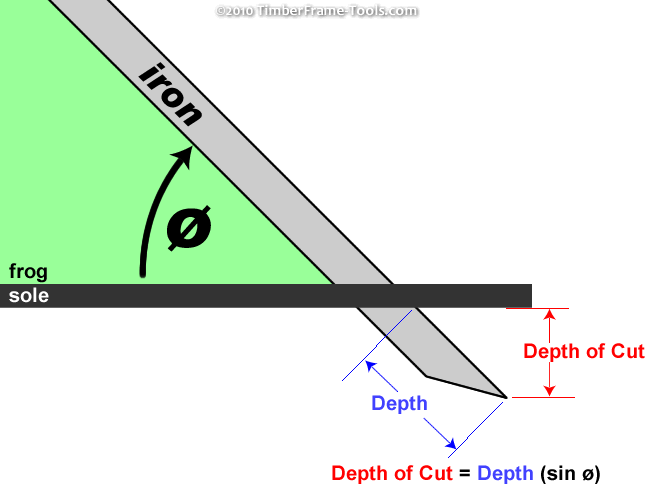
The depth of cut is always less than the actual length of the iron protruding from the sole of the plane.
In order to account for the angle of the plane for a bevel down iron, you need to work the angle of the iron into the calculation.
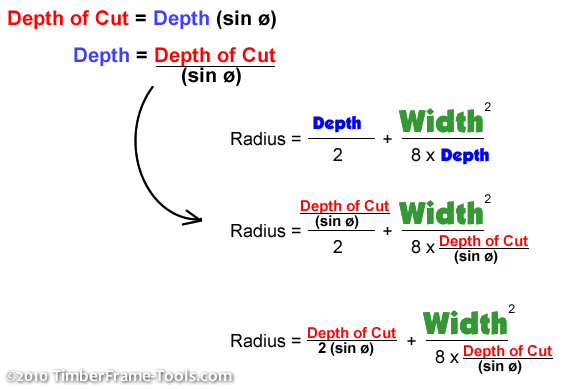
This revised formula allows for the desired depth of cut, the width of the iron and the angle of the frog to calculate the best radius for the camber on the iron.
If all this math is making your brain hurt, here is a little calculator that will allow you to enter in the angle of your frog, the width of your iron and the desired maximum depth of cut and it will return the optimum radius for the camber. (This calculator will work for all bevel down planes. It will not work for bevel-up planes.)
Related articles on Scrub Planes
- Article by Christopher Schwarz about the dual role of a scrub plane
- A pair of great videos (shot by Al Navas at Sandal Woods Fine Woodworking) of Chris Schwarz showing how to grind (1) and then hone (2) the curve on a blade.
- Derek from Perth has a great method for grinding the camber
- Interesting discussion of building your own scrub plane on FineWoodworking.com
- Derivation of the radius of an arc-chord formula on Math Open Reference in case you really want to know where this formula came from.
I found an old wooden jack plane recently that already had a pretty wide mouth opening on it. I decided that I would make it into a scrub plane and take advantage of the large opening. I am in the process of completing the conversion. Right now, I have it working, but at this point, I am making new handles for it. The original rear tote was broken. The front had your basic wooden cabinet door knob attached. I think that, although not necessarily age appropriate, I am going to make a tote and knob similar to those that would be found on an old Stanley plane for this old plane.
I think there is a lot of benefit of using an old wooden plane as a scrub. Sometimes on the rough lumber there is dirt or grit that not only manages to damage the blade, it also manages to scrape up the sole of the plane too. In the iron planes, the scratched up sole can impart some additional marks onto the wood. On the wood bodied planes, the sole can get scratched, but it is less likely to scratch the surface being planed.